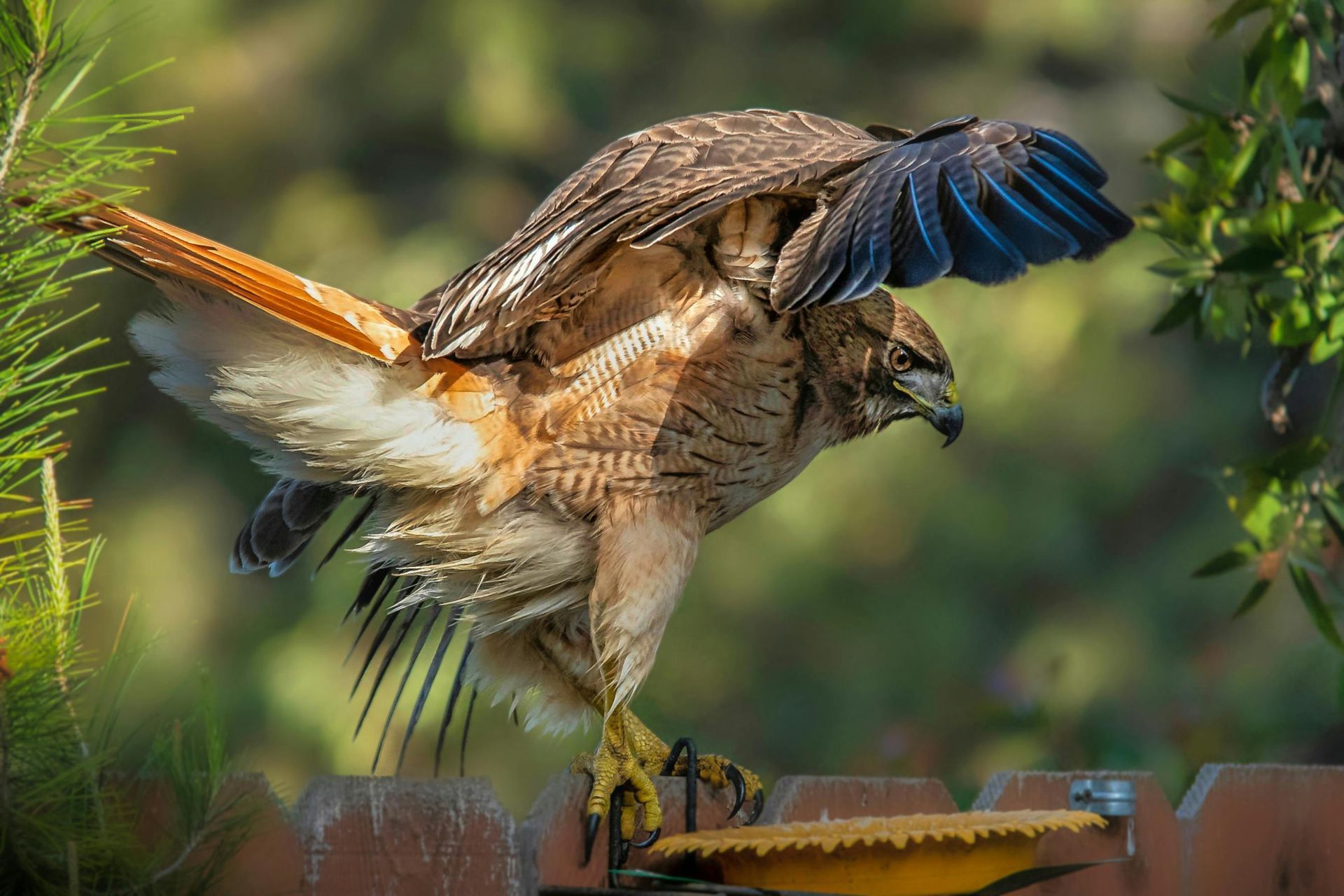The eyes of the Red-tailed Hawk

Blog vol 5.23. The eyes of the Red-tailed Hawk.
From red light (last week’s blog was on red light as a potential treatment for macular degeneration) to red tails (this blog is about a Red-tailed Hawk in our back yard). We live on close to two acres just outside the town of Ancaster and keep a list of birds that we have seen on our property, at last count 44 different species. We have seen a Great Horn Owl (Bubo virgianus), that was exciting! and many Chipping Sparrows (Spizella passerina). The last couple months we have been admiring a large female Red-tailed Hawk (Buteo jamaicensis) which seems to have taken up residence. One of our first sightings of this bird was on the ground near our garage with a freshly caught squirrel. This is a very impressive bird, the biggest Red-tailed hawk I have seen.
This species has done well in North America, the most common raptor going. One of the fascinating things about raptors is their eyes.
1. Eyes Front: The American Woodcock (an earlier blog) has eyes mounted on the sides of its head to provide more that 360 degrees of peripheral vision, the prey’s eye position. The Red-tail has eyes front and centre to keep them sharply focused on their prey, the predator’s eye position. This is not a bird that needs to worry about predators, this bird is the predator.
2. Hawk eyes: We call people hawk eyes for a good reason. As humans we can see 20/20, whereas the Red-tail has cone receptors so closely packed together, it allows them to get down to 20/2.5, a factor of eight times stronger. If you’re a mouse that is within 100 feet of a Red-tail, watch out, you are within its sights.
3. Two Fovea: The deep central fovea (centre back of the eye) has high acuity single cones packed in, and there is a second, more temporal (off to the side) fovea with higher density receptors. There is no escaping detection as a mouse or other prey.
4 Third Eyelid: Hawks have a nictitating membrane, a translucent third eyelid, which sweeps across the eyes from their temporal side to protect the eyes from damage. Eye damage would be bad. A Red-tail with eye problems would not last long in nature, no food for them. This membrane closes over the eye in strong winds providing protection from sand and debris, and also closes when drawing close to its prey, again for protection. This membrane also regularly sweeps over the eye to clean it, with the action taking a fraction of a second leaving the eyes open for surveillance.
Who knew that a lone bird on a rural property had such wondrous eyes!
Til next week,
The good doctor






